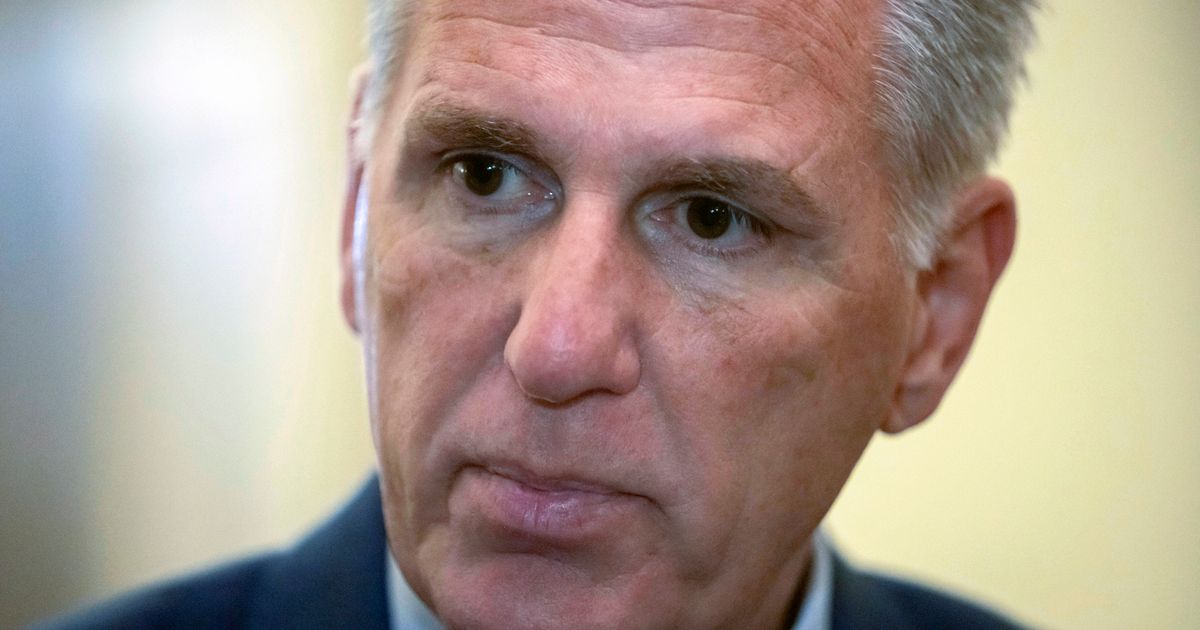WASHINGTON (AP) — The White House on Friday instructed federal agencies to prepare for a potential shutdown following the departure of House Republicans for the weekend without an effective plan to fund the government and avoid disruptive consequences for federal services. It is highly likely that a federal shutdown will occur after September 30 unless Speaker Kevin McCarthy can convince his reluctant hard-right Republican colleagues to pass a temporary funding measure while negotiations continue. McCarthy has proposed a more ambitious plan to pass multiple funding bills once the House reconvenes on Tuesday, with just five days to resolve the standoff. He remains hopeful that progress can be made, stating, “We have members working, and hopefully we’ll be able to move forward on Tuesday to pass these bills.”
The opposition from the hard-right wing of the House Republicans has effectively taken control of the situation, despite McCarthy’s preference to avoid a shutdown. He said, “I still believe if you shut down, you’re in a weaker position.” The potential government shutdown poses a serious risk to various activities such as military pay, law enforcement, food safety programs, air travel, and passport processing. Furthermore, it could have damaging effects on the U.S. economy.
White House press secretary Karine Jean-Pierre placed the blame on Republicans if federal workers do not receive their pay. She emphasized, “Our message is: This doesn’t have to happen. They can do their job and keep these vital programs continuing, keeping the government open.” With the new fiscal year starting on October 1 and no funding secured, the Biden administration’s Office of Management and Budget has advised federal agencies to review and update their shutdown plans, indicating that employees may be informed of potential furloughs next week.
President Joe Biden has been quick to accuse House Republicans of causing the impending shutdown. They are seeking spending cuts beyond those outlined in a June deal that suspended the government’s borrowing limit until 2025. Biden criticized them during a recent speech, stating, “They’re back at it again, breaking their commitment, threatening more cuts and threatening to shut down government again.”
McCarthy is under immense pressure from a small group of hard-right conservatives in his caucus who demand significant spending cuts, hindering his ability to lead the House. Many of these conservatives align with former President Donald Trump, who is the leading Republican contender for the 2024 election against Biden. They opposed the budget deal McCarthy reached with Biden earlier this year and are seeking to unravel it.
Trump has urged House Republicans to stand firm against federal spending. Rep. Matt Gaetz, a close ally of Trump and member of the hard-right faction, has taken control of the House debate as a public rebuke to McCarthy. Late Thursday, this faction pushed McCarthy to dismiss the idea of a stopgap funding measure and instead bring forward the 12 separate bills required to fund the government. The House GOP leadership has announced its intention to process a package of four bills to fund different departments, scheduling the vote for Tuesday.
The House Rules Committee has convened a session on Friday to begin preparing these bills, typically a process that requires extensive floor debate and numerous amendments. However, due to the urgency of the situation, they will be rushed to the floor for next week’s vote. McCarthy’s attempt to pass a widely-supported defense spending bill earlier this week was defeated twice, leading him to lay blame on fellow lawmakers “who just want to burn the whole place down.”
Despite the challenges, McCarthy and his allies remain committed to passing annual spending bills and advocating for a conservative stopgap measure with border security provisions to prevent a shutdown. Shutdowns occur when Congress and the president fail to approve a set of 12 spending bills or a temporary measure. In such cases, non-essential federal agencies are required to cease operations. Since 1976, there have been 22 funding gaps, resulting in 10 instances of employee furloughs.
The most recent and longest shutdown on record occurred during Trump’s administration and lasted 35 days between 2018 and 2019. It began because Trump insisted on funding for a border wall that was opposed by Democrats and some Republicans. While the previous shutdown had some impact on the economy, estimated at $3 billion by the Congressional Budget Office, it represented a small fraction of U.S. economic activity.
A shutdown would have negative consequences for certain sectors of the economy and create challenges for individuals. Military and law enforcement personnel would not receive their pay, and FEMA’s disaster relief fund could be depleted. Clinical trials for new prescription drugs could be delayed, and thousands of children could lose access to care through Head Start. Additionally, environmental and food safety inspections would be delayed, and millions of individuals could lose access to food aid through the Women, Infants, and Children program. Travel industry professionals estimate that a shutdown could result in a daily loss of $140 million for the sector. However, during the last government closure, the S&P 500 stock index actually increased by 11.6%, indicating that the overall economy was relatively unaffected.
Denial of responsibility! Vigour Times is an automatic aggregator of Global media. In each content, the hyperlink to the primary source is specified. All trademarks belong to their rightful owners, and all materials to their authors. For any complaint, please reach us at – [email protected]. We will take necessary action within 24 hours.


